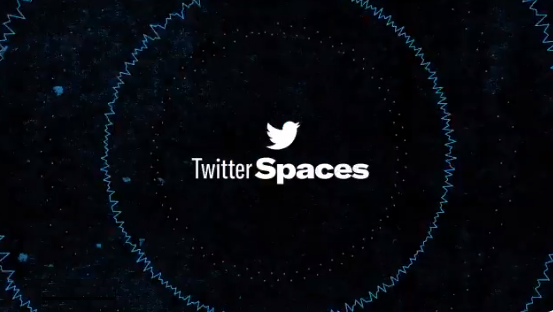SOCIAL
Twitter Continues to Test New Topic-Based Listings for Spaces, Which Could Improve Discovery

It feels like audio social had its moment, doesn’t it? That it was a pandemic-induced trend, which is still valuable to some degree, but is unlikely to become the transformative, connective tool that many envisioned back when Clubhouse had a $4 billion valuation.
Clubhouse is now struggling to maintain growth, Facebook has all but abandoned its audio social initiatives, and other apps, while they keep trying, don’t really seem to be gaining a heap of traction with their copycat functions.
Which leads to Twitter Spaces.
Of all the audio social additions, Spaces seemed to gain the most traction, and with Twitter’s established network to latch onto, it also seemed like the most likely to succeed, long term.
But it hasn’t become a big element of the Twitter experience just yet.
Can it? It definitely appears as though Twitter still has faith, as it continues to experiment with new Spaces options and tools, while Spaces also still has its own tab in the lower function bar of the app, highlighting the potential that Twitter sees in it enhancing the user experience.
And the next stage might be coming – according to new screenshots, Twitter is getting closer to launching a revamped version of the Spaces tab which will separate audio broadcasts, both live and recorded, into topics, in what looks similar to a podcast display.
As you can see in this extended layout example, posted by app researcher Alessandro Paluzzi, Twitter’s new topic-based approach to Spaces will make it easier to find content on key discussions of interest, including dedicated displays of the latest broadcasts on ‘News’, ‘Sports’, ‘Music’ and more.
Twitter’s been working on the new format for some time, with its initial topics layout spotted in testing back in June, which also, at that time, included popular podcasts in the feed.

That, along with the addition of recorded Spaces, seemed to suggest that Twitter was looking to incorporate podcast discovery into its audio tools, expanding its listings beyond Spaces content alone.
That could make Twitter a more essential audio companion, while also providing more capacity for Spaces hosts to convert their streams into downloadable, potentially monetizable shows, while the more dedicated topics approach would improve the discoverability of Spaces content, which has been a key issue impeding Spaces take-up.
Because, most of the time, the majority of in-progress Spaces are not relevant. Tap on the Spaces tab and you’ll see a heap of Web3 and NFT chats. But if you’re not into those topics, there’s generally not a heap of variety at any given time.
Accessible, categorized Spaces recordings solves this, while the addition of other popular podcasts could also get more people turning to the app when they’re looking for audio content – though it is notable that this latest example doesn’t show existing podcasts in the same way as the original test.
That may be why Twitter recently asked TechCrunch not to share these early images, as it’s still working on the format. Maybe Twitter couldn’t secure licensing to include outside podcasts in the new display – though, either way, it still seems like an improvement, which, if nothing else, will give Spaces the best chance to succeed.
And it still might. Time Magazine, for example, is regularly broadcasting via Spaces over summer, which could result in it making Spaces an ongoing content avenue.
That could get more people listening – but the main issue with Spaces remains the same as it was with video live-streaming before it.
When you open up a broadcast tool to everyone, you’re going to get a lot of bad content. That’s inevitable – as more people get the opportunity to broadcast, they’re going to, and only a finite number of creators have the actual talent and skill required to create consistent, engaging content, with broad audience appeal.
As such, you need filters, you need tools to be able to highlight the best, to showcase the cream of the crop, in order to deliver the best experience, which will then keep people coming back.
At present, Twitter’s Spaces tab doesn’t do that, but maybe, with more specific curation, and the addition of recordings, and potentially outside podcasts, that could still happen, and could make Spaces a more valuable element.
SOCIAL
Snapchat Explores New Messaging Retention Feature: A Game-Changer or Risky Move?

In a recent announcement, Snapchat revealed a groundbreaking update that challenges its traditional design ethos. The platform is experimenting with an option that allows users to defy the 24-hour auto-delete rule, a feature synonymous with Snapchat’s ephemeral messaging model.
The proposed change aims to introduce a “Never delete” option in messaging retention settings, aligning Snapchat more closely with conventional messaging apps. While this move may blur Snapchat’s distinctive selling point, Snap appears convinced of its necessity.
According to Snap, the decision stems from user feedback and a commitment to innovation based on user needs. The company aims to provide greater flexibility and control over conversations, catering to the preferences of its community.
Currently undergoing trials in select markets, the new feature empowers users to adjust retention settings on a conversation-by-conversation basis. Flexibility remains paramount, with participants able to modify settings within chats and receive in-chat notifications to ensure transparency.
Snapchat underscores that the default auto-delete feature will persist, reinforcing its design philosophy centered on ephemerality. However, with the app gaining traction as a primary messaging platform, the option offers users a means to preserve longer chat histories.
The update marks a pivotal moment for Snapchat, renowned for its disappearing message premise, especially popular among younger demographics. Retaining this focus has been pivotal to Snapchat’s identity, but the shift suggests a broader strategy aimed at diversifying its user base.
This strategy may appeal particularly to older demographics, potentially extending Snapchat’s relevance as users age. By emulating features of conventional messaging platforms, Snapchat seeks to enhance its appeal and broaden its reach.
Yet, the introduction of message retention poses questions about Snapchat’s uniqueness. While addressing user demands, the risk of diluting Snapchat’s distinctiveness looms large.
As Snapchat ventures into uncharted territory, the outcome of this experiment remains uncertain. Will message retention propel Snapchat to new heights, or will it compromise the platform’s uniqueness?
Only time will tell.
SOCIAL
Catering to specific audience boosts your business, says accountant turned coach

While it is tempting to try to appeal to a broad audience, the founder of alcohol-free coaching service Just the Tonic, Sandra Parker, believes the best thing you can do for your business is focus on your niche. Here’s how she did just that.
When running a business, reaching out to as many clients as possible can be tempting. But it also risks making your marketing “too generic,” warns Sandra Parker, the founder of Just The Tonic Coaching.
“From the very start of my business, I knew exactly who I could help and who I couldn’t,” Parker told My Biggest Lessons.
Parker struggled with alcohol dependence as a young professional. Today, her business targets high-achieving individuals who face challenges similar to those she had early in her career.
“I understand their frustrations, I understand their fears, and I understand their coping mechanisms and the stories they’re telling themselves,” Parker said. “Because of that, I’m able to market very effectively, to speak in a language that they understand, and am able to reach them.”Â
“I believe that it’s really important that you know exactly who your customer or your client is, and you target them, and you resist the temptation to make your marketing too generic to try and reach everyone,” she explained.
“If you speak specifically to your target clients, you will reach them, and I believe that’s the way that you’re going to be more successful.
Watch the video for more of Sandra Parker’s biggest lessons.
SOCIAL
Instagram Tests Live-Stream Games to Enhance Engagement

Instagram’s testing out some new options to help spice up your live-streams in the app, with some live broadcasters now able to select a game that they can play with viewers in-stream.
As you can see in these example screens, posted by Ahmed Ghanem, some creators now have the option to play either “This or That”, a question and answer prompt that you can share with your viewers, or “Trivia”, to generate more engagement within your IG live-streams.
That could be a simple way to spark more conversation and interaction, which could then lead into further engagement opportunities from your live audience.
Meta’s been exploring more ways to make live-streaming a bigger consideration for IG creators, with a view to live-streams potentially catching on with more users.
That includes the gradual expansion of its “Stars” live-stream donation program, giving more creators in more regions a means to accept donations from live-stream viewers, while back in December, Instagram also added some new options to make it easier to go live using third-party tools via desktop PCs.
Live streaming has been a major shift in China, where shopping live-streams, in particular, have led to massive opportunities for streaming platforms. They haven’t caught on in the same way in Western regions, but as TikTok and YouTube look to push live-stream adoption, there is still a chance that they will become a much bigger element in future.
Which is why IG is also trying to stay in touch, and add more ways for its creators to engage via streams. Live-stream games is another element within this, which could make this a better community-building, and potentially sales-driving option.
We’ve asked Instagram for more information on this test, and we’ll update this post if/when we hear back.
-

 PPC7 days ago
PPC7 days ago19 Best SEO Tools in 2024 (For Every Use Case)
-
SEARCHENGINES6 days ago
Daily Search Forum Recap: April 19, 2024
-

 WORDPRESS7 days ago
WORDPRESS7 days agoHow to Make $5000 of Passive Income Every Month in WordPress
-

 MARKETING6 days ago
MARKETING6 days agoBattling for Attention in the 2024 Election Year Media Frenzy
-

 WORDPRESS5 days ago
WORDPRESS5 days ago13 Best HubSpot Alternatives for 2024 (Free + Paid)
-

 SEO7 days ago
SEO7 days ago25 WordPress Alternatives Best For SEO
-

 WORDPRESS6 days ago
WORDPRESS6 days ago7 Best WooCommerce Points and Rewards Plugins (Free & Paid)
-

 AFFILIATE MARKETING7 days ago
AFFILIATE MARKETING7 days agoAI Will Transform the Workplace. Here’s How HR Can Prepare for It.
















You must be logged in to post a comment Login